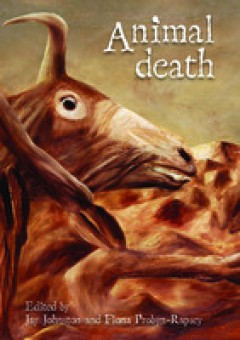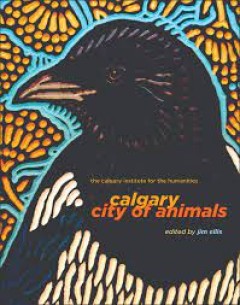Filter by

Animal beauty :on the evolution of biological aesthetics
An illustrated exploration of colors and patterns in the animal kingdom, what they communicate, and how they function in the social life of animals. Are animals able to appreciate what humans refer to as "beauty" The term scarcely ever appears nowadays in a scientific description of living things, but we humans may nonetheless find the colors, patterns, and songs of animals to be beautiful in a…
- Edition
- -
- ISBN/ISSN
- 9780262353359
- Collation
- 1 online resource (128 pages) :illustrations
- Series Title
- -
- Call Number
- -

Methuselah's zoo :what nature can teach us about living longer, healthier lives
"A natural history of longevity in a wide variety of species along with an exploration of what we can learn from other species to preserve and extend human health"--OCLC-licensed vendor bibliographic record.
- Edition
- -
- ISBN/ISSN
- 026237059X
- Collation
- 1 online resource.
- Series Title
- -
- Call Number
- -

Virtual menageries :mediologies of animal representation
The close interdependency of animal emissaries and new media from early European colonial encounters with the exotic to today's proliferation of animals in digital networks. From cat videos to corporate logos, digital screens and spaces are crowded with animal bodies. In Virtual Menageries, Jody Berland examines the role of animals in the spread of global communications. Her richly illustrated …
- Edition
- -
- ISBN/ISSN
- 9780262352000
- Collation
- 1 online resource (312 pages) :illustrations.
- Series Title
- -
- Call Number
- -

Sex and the brain
AnnotationOCLC-licensed vendor bibliographic record.
- Edition
- -
- ISBN/ISSN
- 9780262272247
- Collation
- 1 online resource (xvii, 834 pages) :illustrations
- Series Title
- -
- Call Number
- -

Species of Mind :The Philosophy and Biology of Cognitive Ethology.
AnnotationOCLC-licensed vendor bibliographic record.
- Edition
- -
- ISBN/ISSN
- 9780262267021
- Collation
- 1 online resource (231 pages)
- Series Title
- -
- Call Number
- -

Spatial schemas and abstract thought
"A Bradford book."OCLC-licensed vendor bibliographic record.
- Edition
- -
- ISBN/ISSN
- 9780262316163
- Collation
- 1 online resource (vi, 352 pages) :illustrations
- Series Title
- -
- Call Number
- -

Animal Death
Animal death is a complex, uncomfortable, depressing, motivating and sensitive topic. For those scholars participating in Human-Animal Studies, it is – accompanied by the concept of 'life' – the ground upon which their studies commence, whether those studies are historical, archaeological, social, philosophical, or cultural. It is a tough subject to face, but as this volume demonstrates, on…
- Edition
- Ed. 1
- ISBN/ISSN
- 9781743325247
- Collation
- -
- Series Title
- Animal Publics
- Call Number
- 571.81 ANI a

The Endangered Species Act : History, Implementation, Successes, and Controve…
The complex regulations of the Endangered Species Act can be challenging for environmental professionals who must comply with them or assist clients in compliance. This volume discusses the Act using clear scientific prose that all professionals can readily comprehend. It explores the history and the basic scientific theory underlying the Act. It provides an overview of its key provisions and e…
- Edition
- 1
- ISBN/ISSN
- 146650739X
- Collation
- 282 halaman
- Series Title
- -
- Call Number
- 570 DOU e

Animal Metropolis : Histories of Human-Animal Relations in Urban Canada
Animal Metropolis brings a Canadian perspective to the growing field of animal history, ranging across species and cities, from the beavers who engineered Stanley Park to the carthorses who shaped the city of Montreal. Some essays consider animals as spectacle: orca captivity in Vancouver, polar bear tourism in Churchill, Manitoba, fish on display in the Dominion Fisheries Museum, and the racia…
- Edition
- -
- ISBN/ISSN
- 9781552388655
- Collation
- -
- Series Title
- -
- Call Number
- 590

Calgary City of Animals
How have our interactions with animals shaped Calgary? What can we do to ensure that humans and animals in the city continue to co-exist, and even flourish together? This wide-ranging book explores the ways that animals inhabit our city, our lives and our imaginations. Essays from animal historians, wildlife specialists, artists and writers address key issues such as human-wildlife interactions…
- Edition
- -
- ISBN/ISSN
- 9781552389683
- Collation
- -
- Series Title
- -
- Call Number
- -
 Computer Science, Information & General Works
Computer Science, Information & General Works  Philosophy & Psychology
Philosophy & Psychology  Religion
Religion  Social Sciences
Social Sciences  Language
Language  Pure Science
Pure Science  Applied Sciences
Applied Sciences  Art & Recreation
Art & Recreation  Literature
Literature  History & Geography
History & Geography